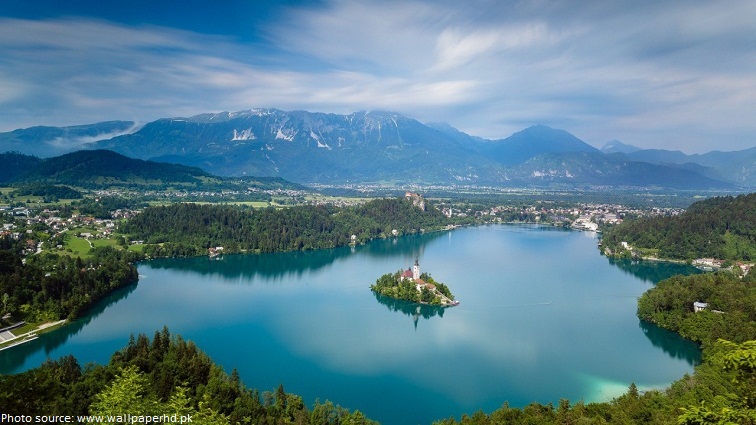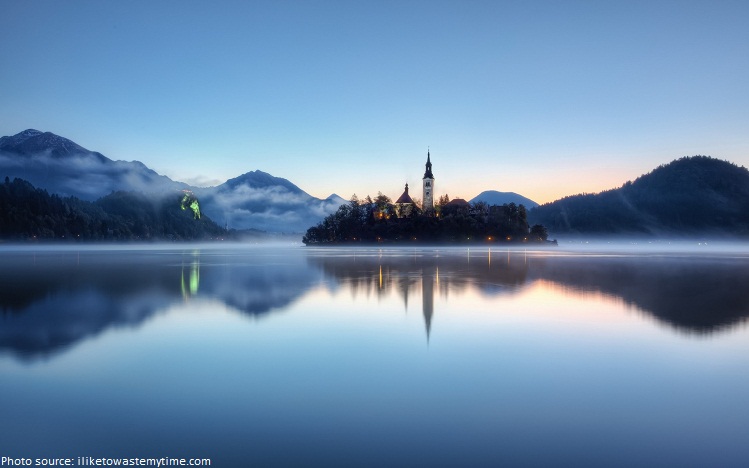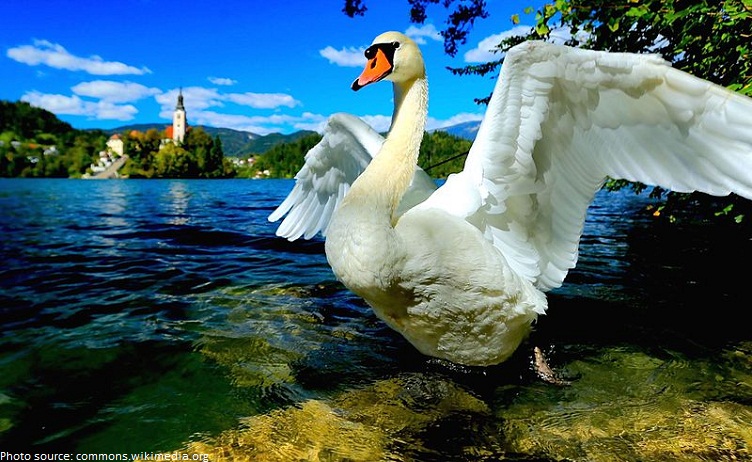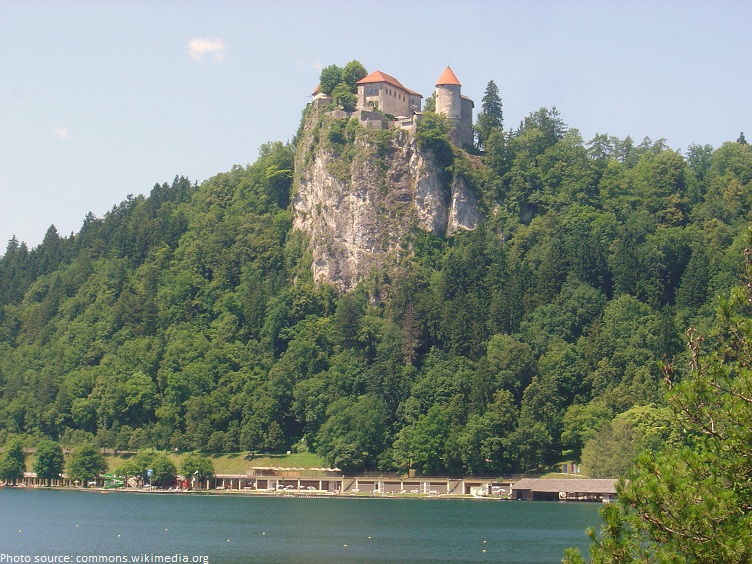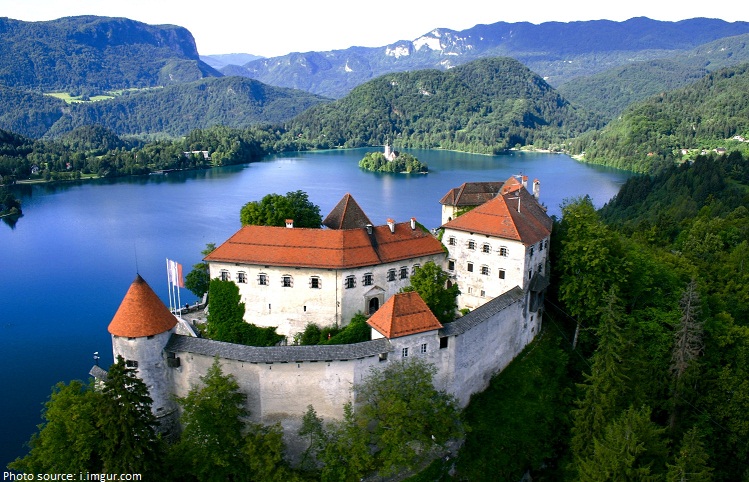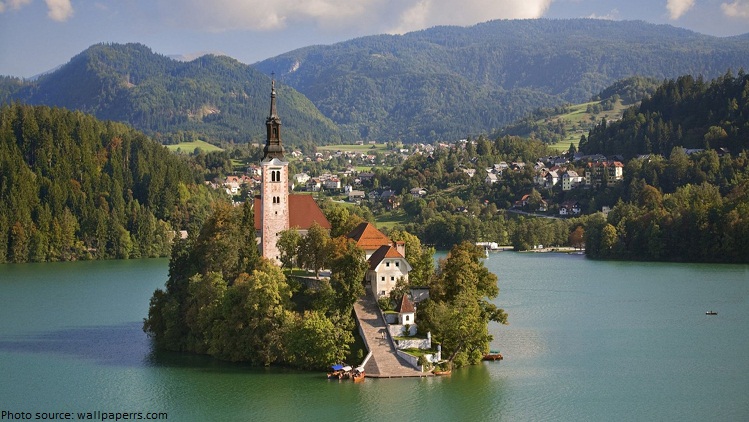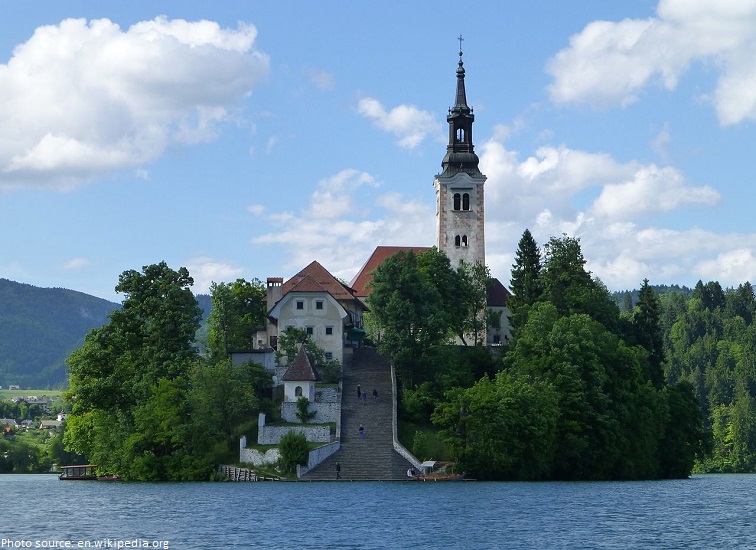Lake Bled is a lake that lies in the northwest of Slovenia.
It is 2120 meters (6,960 feet) long, up to 1380 meters (4,530 ft) wide with a maximum depth of 29.5 meters (97 feet) and it is of the tectonic origin, After the last Ice Age, the Bohinj Glacier deep end its natural tectonic hollow and gave it its present form.
When the ice melted the basin was filled with water.
The lake has no significant, feeding him water supply mainly underground springs.
Tectonic origin reveal thermal springs in the northeastern part. These cause the fact that the water in the lake is pleasantly warm – up to 26°C (79°F) (one of the warmest alpine lakes) providing swimming through the summer until September.
The lake is situated in a picturesque environment, surrounded by mountains and forests.
The lake is lovely to behold from almost any vantage point, and makes a beautiful backdrop for the 6 kilometers (3.7 miles) walk along the shore.
Lake Bled is known for the presence of swans as well as ducks.
Perched atop a steep cliff more than 100 meters (328 feet) above the lake, Bled Castle is how most people imagine a medieval fortress to be, with towers, ramparts, moats and a terrace offering magnificent views.
The castle, built on two levels, dates back to the early eleventh century, although most of what stands here now is from the sixteenth century. For 800 years it was the seat of the Bishops of Brixen.
Tiny, tear-shaped Bled Island beckons from the shore.It is the only natural island in Slovenia.
On the Bled island, archaeologists have discovered traces of prehistoric (11th to 8hth centuries B.C.) and Slavic (9th to 10th century) settlements.
The most recognizable symbol of the lake is the Church of the Assumption with its long and diverse history, however the lush greenery also hides other interesting island buildings, like the bell-tower, church, chaplain’s house, provost’s house, small hermitage and some mysterious legends.
The church has a 52 meters (171 feet) tower and there is a Baroque stairway from 1655 with 99 stone steps leading up to the building.
The present form of the church dates from the 17th century when it was renovated after another earthquake. The main altar with its rich gold-plated carving, dates from 1747.
Of special interest is the “”wishing bell“” from 1534 in the upper roof beam above the church nave, by F. Patavina from Padova; you can ring “wishing bell” to ask a special favour.
The ascent on Straža isn’t difficult. The trail is pleasant and surrounded with pine, oak, lime and birch trees. Straža is known as the finest Bled viewpoint rising above the south-eastern lake shore, offering views at Lake Bled, the Bled Castle, Jelovica plateau and Mt. Stol.
Although most choose to visit Bled in spring or summer, the fairytale landscape of the lake in winter is a must see.
It was first mentioned in work in 1011, when the German Emperor Speechmaker II donated it to the Bishop of Brixen.
Bled also had an important role in Yugoslav history, as the site of an official residence of Josip Broz Tito which was built near the lake. In 1984 his mansion in Bled was converted into a hotel.
Lake Bled has been featured many times by the media all over the world and it was also nominated for one of the new seven natural wonders of the world by the New7Wonders.com website.
The World Rowing Championships in 1966, 1979, 1989 and 2011 were held at Lake Bled.
It is one of the most popular destinations in Slovenia.
On Lake Bled you can rent boats, go diving or simply snap countless photos.
